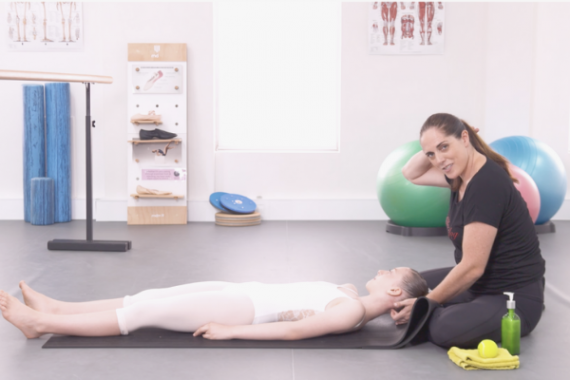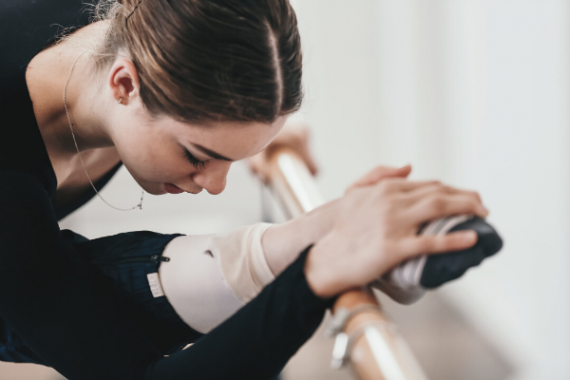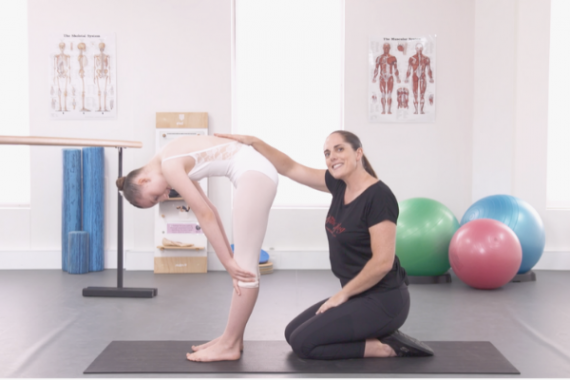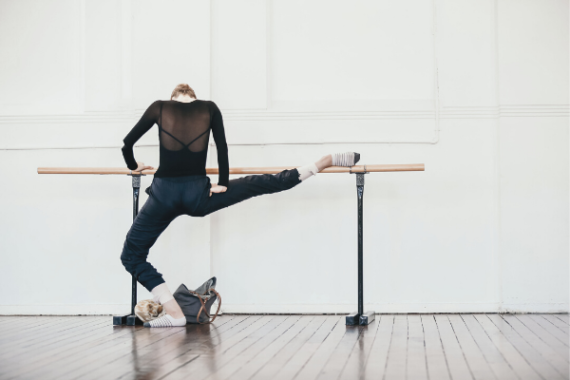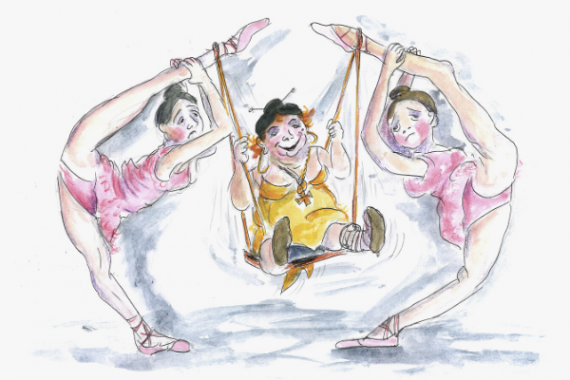- Free Articles
- Shop
- Workshops
- The Dance Educator Series
- L1 – The Fundamentals
- L2 – Pointe Intensive
- L2 – Flexibility Intensive
- L2 – Training Turnout in Tiny Dancers
- L3 – Foot & Ankle Injuries in Dancers – NEW
- L3 – Hip Injuries in Dancers
- L3 – How to Train Extreme Mobility Safely
- Upcoming Workshops
- Workshop FAQ’s
- Workshop Testimonials
- Host Application Form
- Dance Teacher & Health Professional Directory
- Members Areas
- Cart
- My Account
Creating a Program and Tracking your Progress
When you are not dancing, either at all or in a limited capacity, it is vitally important that you maintain the mobility, strength and endurance in all parts of your body with a carefully structured daily program. If you have access to a Pilates studio or Gymnasium with lots of equipment this is wonderful, however many dancers have limited resources when it comes to this kind of equipment at home.
The following outline is a suggestion of some things to include in a daily program for a full time dancer or elite dance student. It may be modified depending on your level of traing, styles of dance and the particular needs that you have. All dancers' bodies are different. We all have different strengths, weaknesses, and things that tighten up when we stop. For instance if you know that mobility into second splits is your challenge, you may want to make it a focus to maintain and even improve this particular range while training at home, rather than let it tighten up even more than normal. If you have had issues with a particular ongooing injury, this is an ideal time to rehab it for good.
Please also note that different people like doing different exercises at different points in the day. For example, some people like to do cardio work in the mornings, while others like it in the afternoon, after their class work. Where you place each section is purely a personal preference, and will depend on the other things you have to do in your day.
Make sure to plan out your intended program for the next two week in your downloadable PDF to hep you stay on track and make the fastest progress towards your goals.
Mobilising Exercises (Early Morning)
When you are not dancing to your full capacity, either due to injury or being in quarantine, the body can stiffen up in all kinds of places. This happens as we generally do not take our body through such extreme ranges of motion in your normal daily life. To learn more about why the body does this, check out The Fuzz Speech by Prof. Gil Hedley on the "What is Fascia" page. Make a special effort to a good amount of mobilising exercises in the mornings to lubricate all your tissues and maintain your full range of motion. Please note, fascial mobilisers are different to direct muscle stretches, so talk with your therapist or dance teacher if you are unsure of what to do in this section. The Sun Salutation exercise on the next page is a great place to start if you are unfamilar with fascial mobilisers.
Some examples may include:
- Fascial Calf Mobilizers
- Lateral Hip & Hip Flexor Mobilisers
- Thoracic Mobilizers (see video on this page)
- Thoracic Mobility section of the Front Splits Fast Flexibilty program
- Spinal Mobility section of the Front Splits Fast Flexibility program
- Improving Hip Extension section of the Front Splits Fast Flexibility program
- Other Hip Flexor mobilisation exercises (NOT deep held stretches)
- Sub Occipital Releases and other Head and Neck Releases.
Cardiovascular Exercise
There are many different types of cardiovascular exercise that are possible when you are not able to dance. Talk to your therapist about options that are safe for you to do during each phase of rehab if you have an injury. Even if you do not require a boot full time, if you have a ligament injury or stress fracture in your foot, a boot or a heat mouldable plastic splint can be used to allow you to do more cardio exercise without risk of moving the injured area. Please CLICK HERE for more Cardio training options.
Warm Up
Before you get into your Barre and class work (whether you are doing a floor barre or standing barre) is a good idea to go through a detailed warm up. This is something that many people miss out when not dancing to their full capacity but can make a big difference to how you feel in your "class work". How much of a warm up is needed will also depend on whether you chose to do your cardio work in the morning or the afternoon. It is important to understand the difference between an effective warm up and flexibility work.
Class Work
Depending on your level of training, the presence of any injuries or restriction and your technical capacity, the class work component of your day may range from a simple half hour Floor Barre to a full 90 minute class. Even if you have no injuries, I highly recommend using a floor barre program at least every second day. Floor Barre can be even more challenging than a regular standing barre, and can highlight many weaknesses that may be able to be masked in a regular class. If you are unfamiliar with a technical floor barre then check out the following video, and our detailed "Will I Ever Dance Again?" programme.
Specific Strengthening and Technique Work
Whenever you are not dancing at your full capacity it is a perfect opportunity to improve on any of the areas that are preventing you from performing at your best. Whether it is developing deep core strength or flexibility in your upper back, make the most of your time off to go through any other strengthening and conditioning exercises that you know. However, rather than just doing a big jumble of random exercises, try focussing on just one area for 2 weeks to see more results. Identify several exercises that fall into the specific categories of:
- Mobilise (creating space and fluidity to allow the movement)
- Isolate (Specific isolation of the deepest muscles)
- Integrate (How do the deepest muscles work with the more superficial muscles)
- Function (How will you use this pattering in class)
- Load (Adding speed, repetition or resistance)
If you are needing help with working out which exercises fall into which categories, ask your dance teacher or therapist, or consult one of our many programs such as Training Turnout or How to get your legs higher in a devéloppé devant.
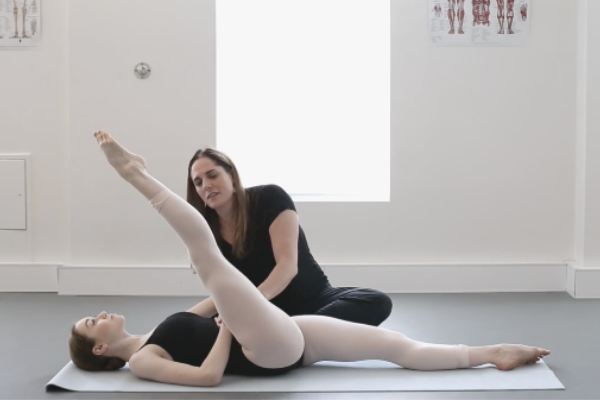
Deeper Stretches and Flexibility Work
Always remember to do your deeper stretches and flexibility training later in the day once all of your other work has been completed. Remember that there is a very big difference between "Warm Up" and "Flexibility Training".
For most people, the structures limiting their flexibility are not muscles, but more fascial restrictions and neural tension. It is extremely important to deal with these other restrictions before working on any muscular stretches. Use the following video to help work out what kind of restrictions you have.
If you are going to do longer stretches, it is important to do these later in the day, as if you hold a stretch longer than about 30 seconds that muscle will not be able to operate at its full power for at least half an hour afterwards. Therefore if you do your deep stretches before class, you may lose power and control in the arewas you need it most.




